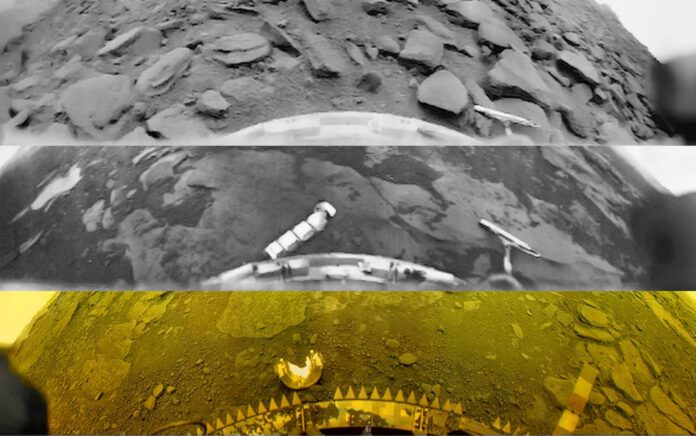
The Unveiling of Venus: Earth’s Lesser Known Sister Planet
Often referred to as Earth’s sibling, Venus shares quite a few characteristics with our home planet. Given its similarity in size to our own ‘blue marble’ and its dense cloudscape, it should come as no surprise that it feels rather familiar. However, few pictures of the planet’s surface exist, which begs the question—why?
The Harsh Realities of Venus
Venus exists in stark contrast to Earth and Mars, despite initial appearances. This inhospitable planet boasts a surface temperature of 465 degrees Celsius. Though Venus may have once harbored life and possibly even an ocean -with a climate akin to Earth’s- it has since transformed into a harsh, greenhouse-like environment marked by high sulphuric acid rain and an atmospheric pressure far exceeding that of Earth. Quite clearly, this isn’t the most welcoming place for robotic explorers.
Venus Exploration: A Soviet Chapter
During the 1960s and 1970s, while America set its sights on Mars, the Soviet Union decided to explore Venus. The Venera program was launched and, over the course of two decades, accounted for several interplanetary firsts. For instance, they were credited with the first hard landing on another planet with Venera 3 in 1966, and the first successful measurements of an alien atmosphere with Venera 4 in 1967. What’s more, Venera 7 in 1970 marked the first successful landing on another planet.
The Soviets quickly realized Venus’s challenging environment, that likened to an overheated pressure cooker, as multiple landers were crushed by the high atmospheric pressure. Despite this, they successfully landed several probes, which returned valuable photographic evidence. These images, captured by Venera 9, 10, 13, and 14, were later touched up by Professor Ted Stryk, revealing more details than the original photos.
Mars or Venus: A Tough Choice
Since the 1980s, no spacecraft has touched down on Venus. The conditions on Mars appear far more favorable for direst exploration. Martain rovers can function for years, exploring and making countless discoveries, while Venusian landers barely survive an hour. Furthermore, Venus’s surface is far more geologically active than Mars’s. Current studies suggest that Venus undergoes constant surface rejuvenation, erasing any potential signs of past life—making it virtually impossible to find any traces. On the other hand, finding signs of life on Mars is a possibility, although current rovers might not have the sufficient capability to detect them.
The Future of Venus Exploration.
Nevertheless, the scientific community isn’t giving up on Venus. Around the end of this decade—somewhere between 2028 and 2030—NASA plans to launch the VERITAS mission, an acronym for Venus Emissivity, Radio Science, InSAR, Topography, and Spectroscopy. The mission aims to map Venus’s surface, which is of great interest since recent discoveries indicate that Venus’s volcanoes could still be active. It’s the scientists’ hope that the mission will reveal the number of active volcanoes on Venus and whether the planet experiences plate tectonics.











